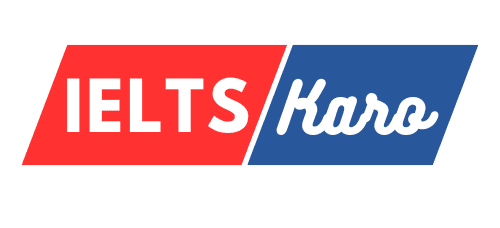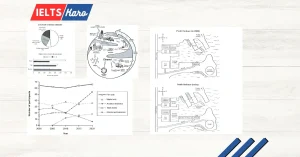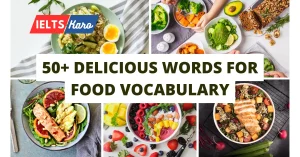5 Common IELTS Writing Task 1 Mistakes
Based on my personal experience of marking more than 500 Task 1 responses from students that I have been teaching, there are some glaring common IELTS Writing Task 1 mistakes that keep getting repeated time and again. And I can understand; students are NOT to be blamed for it. They have never been taught the proper way of writing Task 1 responses properly.
Achieving a high score on the IELTS Writing Task 1 can be challenging, but it’s not impossible. By identifying and correcting these errors, you can improve your performance and boost your score. Here are the five most common mistakes that can prevent you from getting a Band 6 or higher.
1. Misinterpreting the Data
Understanding the Task
One of the biggest pitfalls in IELTS Writing Task 1 is misinterpreting the data presented in graphs, charts, or tables. This mistake leads to incorrect analysis and poor overall coherence in your writing. For example, in the Writing Task 1 below, instead of saying “830,000 men enrolled in part-time education“, you should say “close to 830,000” or “slightly over 800,000.” This is because we are unsure if the figure is indeed 830,000 or not.

How to Avoid It
Take a few minutes to thoroughly analyse the data before you start writing. Identify the main trends, compare key figures, and note any significant changes. If the graph does not specifically depict the exact figure, write an approximate amount.
2. Lack of Structure
Importance of Organization
A well-structured response is crucial for achieving a high band score. Many test-takers fail to organize their responses effectively, leading to confusion and a lack of clarity.
How to Avoid It
Follow a clear structure:
- Introduction: Paraphrase the task prompt and give an overview of the data.
- Body Paragraphs: Describe the main trends and significant data points.
- Conclusion: Summarize the key points.
Using this structure ensures that your response is easy to follow and logically organised.
3. Inaccurate Language and Vocabulary
Using the Right Words
Using inaccurate or inappropriate vocabulary can significantly lower your band score. This is especially true if your word choice makes your descriptions unclear or incorrect.
How to Avoid It
Expand your vocabulary related to data description. Practice using words like “increase,” “decrease,” “fluctuate,” “peak,” and “steady.” Be precise with your language to clearly convey the trends and comparisons in the data.
4. Overlooking Key Details
Paying Attention to Important Data
Another common mistake is failing to mention key details in your response. Omitting important data points can result in a less comprehensive answer, which impacts your score.
How to Avoid It
Carefully examine the task prompt and data. Highlight or underline significant figures and trends that you need to mention. Make sure your response covers all the critical information without getting bogged down in minor details.
5. Poor Grammar and Sentence Structure
Impact of Grammar
Grammar and sentence structure play a crucial role in your overall score. Frequent grammatical errors or awkward sentence constructions can make your writing difficult to understand and less coherent.
How to Avoid It
Work on improving your grammar skills and practice writing clear, concise sentences. Use a variety of sentence structures to demonstrate your language proficiency. Consider seeking feedback from a teacher or using online tools to check your grammar.
Conclusion
Avoiding these common mistakes can significantly improve your IELTS Writing Task 1 score. By accurately interpreting the data, organizing your response effectively, using precise vocabulary, including key details, and maintaining proper grammar and sentence structure, you can enhance your writing and aim for a Band 7 or higher. Practice regularly, seek feedback, and focus on these areas to see substantial improvements in your performance.
To know more about the IELTS writing criteria, visit the following:
IELTS Writing Marking Criteria
FAQs
1. What is the most common mistake in IELTS Writing Task 1?
The most common mistake is misinterpreting the data, which can lead to incorrect analysis and poor overall coherence in your response.
2. How can I improve my vocabulary for IELTS Writing Task 1?
Practice using words related to data description, such as “increase,” “decrease,” “fluctuate,” “peak,” and “steady.” Reading sample responses and noting the vocabulary used can also help expand your word bank.
3. Why is structure important in IELTS Writing Task 1?
A clear structure ensures that your response is logically organized and easy to follow. This helps convey your ideas more effectively and improves coherence and cohesion, which are critical for a higher band score.
4. How can I avoid grammatical errors in my writing?
Improve your grammar skills by studying common rules and practicing regularly. Use a variety of sentence structures and seek feedback from a teacher or use online grammar checking tools.
5. What should I include in the conclusion of my response?
The conclusion should summarize the key points and trends you have discussed in your response. It should provide a clear, concise summary of the main information presented in the data.





